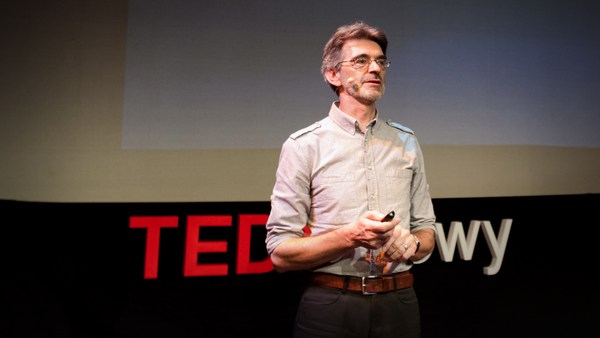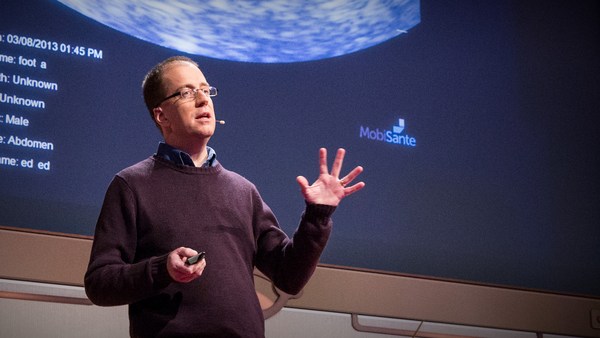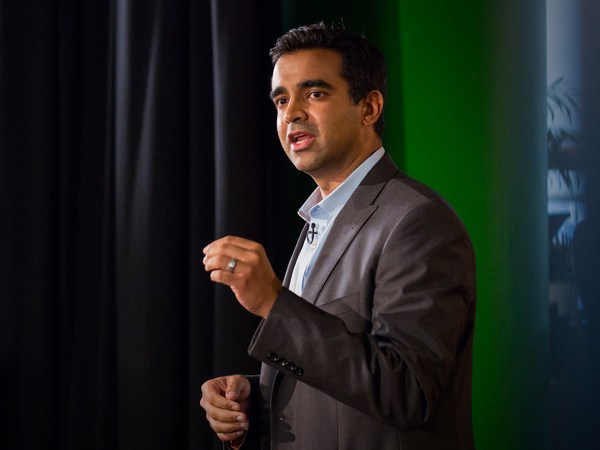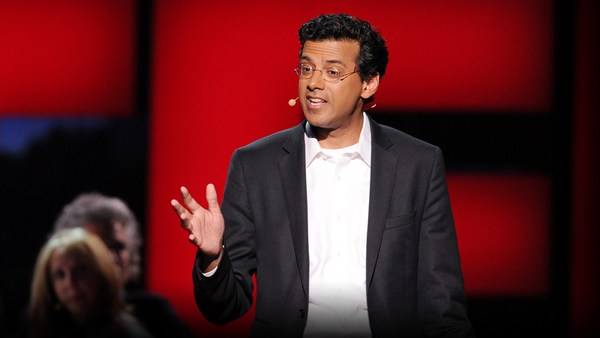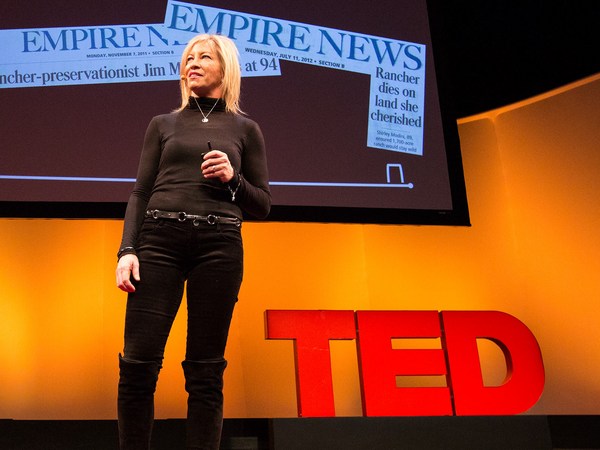I’m not the first person to talk about death from this red dot, but I might be the first person to use time travel as my medium. I'd like to invite you to do some time travel with me, and I’d like to start by going back in time. We are going to go together to 2021. We’re going to watch some football, but only briefly, because while we're watching this match between Denmark and Finland, about three minutes before halftime, while something’s happening on my screen over here, over there, there’s a young man running on the wing. He’s tall. He’s blond. He’s a perfect athlete. He is running like the wind. He’s one of the fittest men in Denmark. He is their highest goal scorer. And as he’s running, something is happening. His knees are buckling. He’s falling. He’s spreading his length along the pitch. He is lying completely still. And the ball is still in play. One of his teammates goes over, calls to him, shakes him, feels his wrist, feels his neck, calls in panic to the medics at the side of the pitch, who rush on. And within moments, his teammates have formed a circle around him to make things private. This man, Christian Eriksen’s, heart has stopped. He’s had a cardiac arrest. We can’t really see, whether we are in the stands at the football or whether, like millions of others, we’re watching on the TV screen, because of the circle of players. But we can see the movements, the vigorous movements, of the medics applying cardiopulmonary resuscitation, CPR. They are pressing so hard on his chest that they’re squeezing the blood that still has oxygen in it from his heart and lungs round his organs and most particularly to his brain. A brain without an oxygenated blood supply will be dead within very short minutes. CPR is first aid. It is vital first aid. And there are probably people in this audience who are trained - and I could probably just about make you out - if you would wave kindly to show me. Wow. I want to thank you on behalf of all of us because without CPR starting straightaway from a bystander, if anybody that we know and love falls down in a cardiac arrest, they will stand no chance of recovery. CPR is the first aid that keeps the organs oxygenated, but it’s not the treatment. The treatment might be a defibrillator. And we keep watching our screen. We will see Eriksen’s feet in his football boots twitch as there’s a shock applied to his chest. And in a few minutes’ time, he will be carried from that pitch, rubbing his eyes, moving his mouth. Definitely not dead. And because we’re time travelers, we also know that within nine months, having had treatment to stabilize his heart, he will be playing football for his nation again. He is one of the lucky one in 10 who survive to leave hospital well after treatment for a cardiac arrest. One in 10. But with no treatment, with no CPR, it’s zero in 10. Let us now time travel to 2091. Seventy years after Christian Eriksen has received CPR and defibrillation on the football pitch. Here he is, coming quietly. Grandpa Chris is in bed in hospital. He’s been failing for the last few weeks. He’s 99 years old. His wife is holding his hand. His family are around him. His children, his grandchildren, they’re telling stories. They’re laughing. They’re holding the space. His chest is weak. His kidneys are weak. He is very, very old. He has recently been very, very sick. And it’s clear to me, with my lifetime’s experience of working at deathbeds, that this is a man who’s at the very end of his life. And here’s a nurse coming in. And she’s observing that there are now long breaths - long gaps between his breaths. And she goes and checks his wrist, where she’s not sure she can feel a pulse. She’s checking his neck. I think that she’s about to tell the family that their beloved grandpa is very close to death. But what’s she doing? She is pressing a red button. There’s a klaxon sounding. She’s shouting: “Cardiac arrest, Room 4.” People are running into the room, people in scrubs. They are ushering the family out of the room. They’ve begun compressions on his chest. They’re trying to thread a tube down his airway, and his youngest granddaughter, as she leaves the room, she very distinctly hears the crack of a rib. And in five or 10 or 15 minutes, this family will be brought back into the room, after this procession of cardiopulmonary resuscitation has failed, as it inevitably will at the very end of somebody’s life. But their peace has been shattered. Their moment of a family together at the end of Grandpa’s life has been lost. What ... what just happened? Well, what happened was two very important things, each important in their own right but that should not have happened in the same room to the same person. Remember that when Christian Eriksen fell, his legs were still running. Cardiac arrest is when the heart stops first, and everything else is still working. At the very end of our lives, there is a second heart-stopping moment when the blood pressure has been falling, and the organs are gradually failing, and the different departments in the brain are putting their lights out, and gradually the brain is becoming unconscious, and the breathing becomes irregular and slows and stops. And a few moments after that, with no oxygenated blood supply, the heart stops last. This is not a cardiac arrest. Somehow we’ve confused those two heart-stopping moments. So when we go into hospital and we or our families say “Do everything,” we’ve forgotten that some of the everythings are no longer appropriate. So, we can’t really time travel. Sorry, folks. But ideas can. And there are 100 people here tonight and many more who’ll listen on video. And we all have people that we love. We all belong to communities. We all have places of work. We all have circles of people that we can talk to. We can talk to our young people and our colleagues about training to be CPR proficient, so the numbers of lives that can be saved will be increased by more and more of us being proficient in cardiopulmonary resuscitation. And we can also talk to each other about the process of ordinary dying, in which there is a predictable series of changes that we can prepare for, that we can discuss, that we can accompany, that we can be together through as we or the person we love is dying. And we can avoid the confusion of whether or not CPR or other intrusive treatments in an intensive care unit are appropriate. We can learn to accept that dying is not a medical catastrophe. It's the end part of human living because we are mortal. And so rather than meeting death with resistance and violence and broken ribs, let us start to meet our ordinary mortal end with quiet dignity, with acceptance, with loving messages within our families, and with the awe that that moment deserves. Thank you. (Applause)
